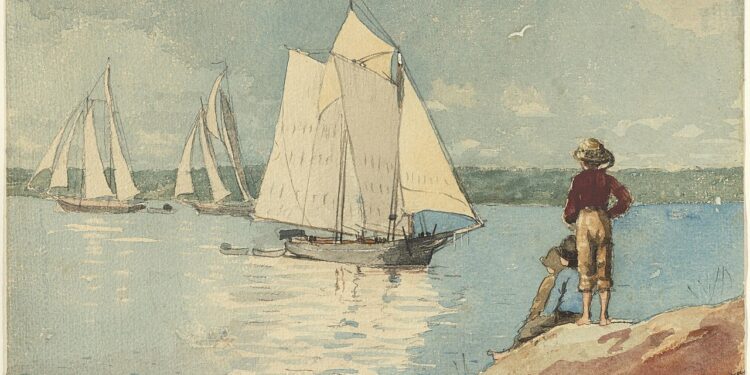“A Fair Wind” (“Breezing Up”) (1876)
“A Fair Wind” (“Breezing Up”) (1876) (24”x38”) (National Gallery of Art) was exhibited during the American Centennial. After Homer returned to Gloucester, he began to paint American scenes of life along the Atlantic coast. Originally titled “A Fair Wind,” meaning smooth sailing ahead, the painting presented a positive, optimistic, and hopeful view of America’s future. The catboat, named the Gloucester, is steered by a young boy holding the tiller, rather than the older man in the boat. The boy steers toward the horizon, and the future. By adding the anchor, Homer further represents security and hope.
When “A Fair Wind” was shown at the 1876 Centennial Exhibition in Philadelphia, it was recognized as a positive expression of America’s future. Henry James, the writer, and Homer’s good friend, was critical of the painting: “We frankly confess that we detest his subjects…he has chosen the least pictorial range of scenery and civilization; he has resolutely treated them as if they were pictorial…and, to reward his audacity, he has incontestably succeeded. There is no picture in this exhibition, nor can we remember when there has been a picture in any exhibition, that can be named alongside this.” The National Gallery of Art purchased the work in 1943, and “Breezing Up” became the commonly used title of the painting. The Gallery describes the painting on its web site as “one of the best-known and most beloved artistic images of life in nineteenth-century America.” The United States Postal Service issued in1962 a commemorative stamp to honor Homer with the image of “Breezing Up.”
Â
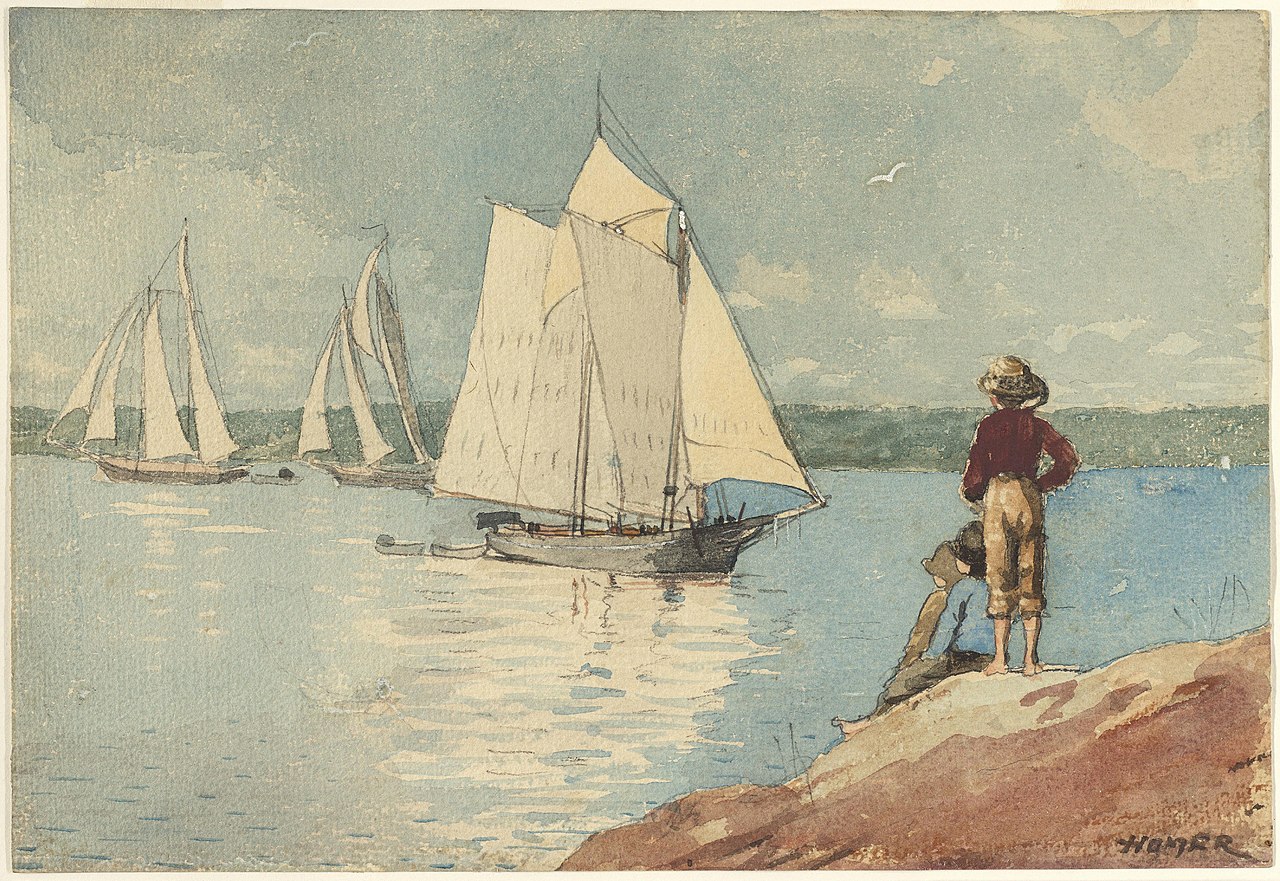
“Clear Sailing” (1880)
By 1873 Homer had begun to use watercolor for sketches of subjects for finished oil paintings. “Clear Sailing” (1880) (8”x11”) (Philadelphia Museum of Art) is one of his pencil and watercolor sketches. In the summer of 1880, Homer lodged with the lighthouse keeper at Ten Pound Island, located in the middle of Gloucester Bay harbor. He observed the sailing ships, small boats, and all the activity associated with a busy harbor. Homer included a fully rigged ship in the distance. His view from the light house offered a closer look at ships and boats. Three young boys sit and stand on the beach and enjoy watching the scene. A sea gull soars across the sky.Â
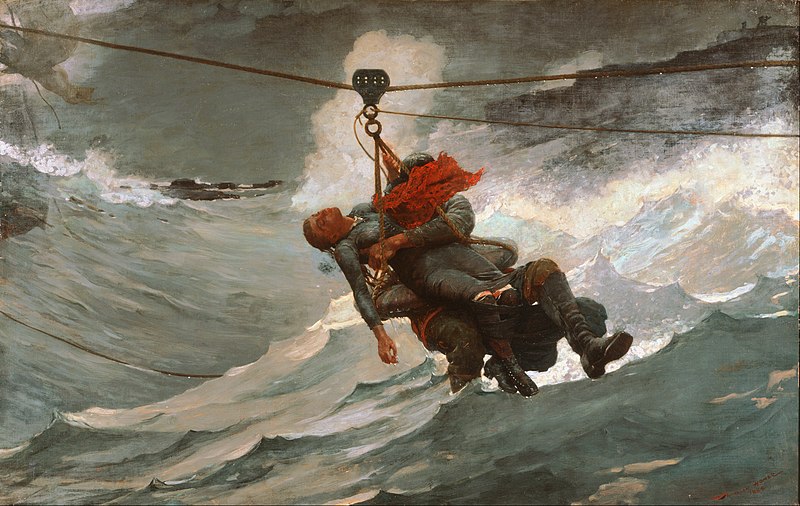
“The Life Line” (1884)
“The Life Line” (1884) (29”x45’’) is a depiction of another side of life along the coast of the Atlantic Ocean. Homer and others who lived on the coast witnessed the dangers of ocean voyages. Immigrants, visitors, and cargo were at the mercy of the restless sea. Many stories of shipwrecks were reported in the newspapers. The wreck of the ship Atlantic in1873 that carried 962 people, resulted in the loss of 562 passengers and crew. Homer witnessed the newly invented breeches buoy system that was first employed in 1883 in Atlantic City, New Jersey, to safely transfer people to shore.
In the painting the storm rages, the waves are intense, and a woman is held tightly in the breeches buoy by a strong male figure. The woman’s windblown red scarf centers the composition and provides a bold contrast to the treacherous dark green and white waves. “The Life Line” is a depiction of the American male hero saving the life of the helpless woman. This type of story was popular in the 19th Century. Homer painted this work after seeking out eyewitnesses and hearing their accounts of the events.
Homer had witnessed new life saving methods while he was in England, and he brought information about them to America. The United States was unique in organizing beach patrols and using new lifesaving techniques. The exploits of the new American heroes, the coast guards, were illustrated in several publications after 1878. “Life Line” was exhibited for the first time in 1884 at the National Academy of Design in New York, and the painting was immediately purchased for $2,500.
Â
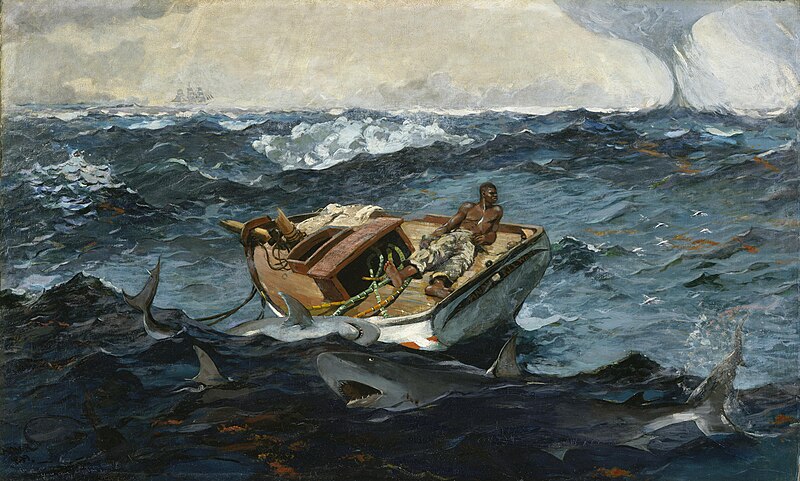
“The Gulf Stream” (1899)
Homer spent several summer vacations with fishing fleets in the Bahamas. He spent time near Florida, Cuba, and the Caribbean. He painted “The Gulf Stream” (1899) (28’’x49’’) (Metropolitan Museum) during his first trip to the Caribbean in 1885. “I painted in watercolors three months last winter at Nassau, & have now just commenced arranging a picture from some of the studies.” A boat, its mast broken, floats rudderless on the restless ocean. Homer wrote, “I have crossed the Gulf Stream ten times & I should know something about it.” A single negro lies on the deck, described by Homer as “dazed and parboiled…and the sharks have been blown out to sea by a hurricane.”Â
Homer sent “The Gulf Stream” to the Pennsylvania Academy of Fine Arts in 1900. He sent the painting to the National Academy of Design in 1906; the members of the academy jury wanted the Metropolitan Museum to purchase the painting. Newspaper reviews were positive and negative. One Philadelphia newspaper critic wrote that people were laughing at the “Smiling Sharks.” Another called attention to the “naked negro lying in a boat while a school of sharks [are] waltzing around him in the most ludicrous manner.” In response to concern expressed about the outcome of the story, Homer said, “You can tell these ladies that the unfortunate negro who now is so dazed & parboiled, will be rescued & returned to his friends and home, & ever after live happily.” The Metropolitan Museum purchased the painting that year.
Â
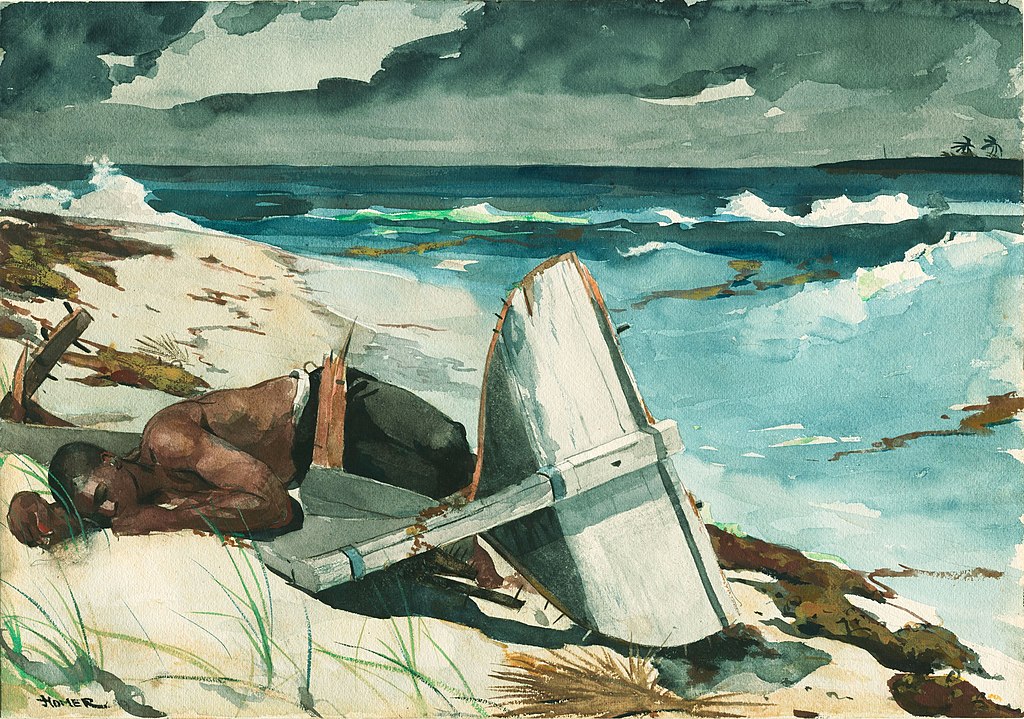
“After the Hurricane” (1899)
“After the Hurricane” (1899) (15’’x21’’) (Art Institute of Chicago) was one of Homer’s finished watercolors. It is not clear if this work was painted before or after “The Gulf Stream,” but it depicts an event resulting from a hurricane. Whether the negro in the wrecked boat is dead or alive is not certain, but the devastation caused by the hurricane is evident.
On the weekend of November 1 and 2, 2024, Chestertown will celebrate Down Rigging and enjoy the glory of the tall ships docked in our harbor.Â
Beverly Hall Smith was a professor of art history for 40 years. Since retiring to Chestertown with her husband Kurt in 2014, she has taught art history classes at WC-ALL and the Institute of Adult Learning, Centreville. An artist, she sometimes exhibits work at River Arts. She also paints sets for the Garfield Theater in Chestertown.

Source link : http://www.bing.com/news/apiclick.aspx?ref=FexRss&aid=&tid=6721fe0946c3433d8138a4e840fb21ac&url=https%3A%2F%2Ftalbotspy.org%2Flooking-at-the-masters-winslow-homer%2F&c=15169867300435545239&mkt=en-us
Author :
Publish date : 2024-10-24 00:59:00
Copyright for syndicated content belongs to the linked Source.

